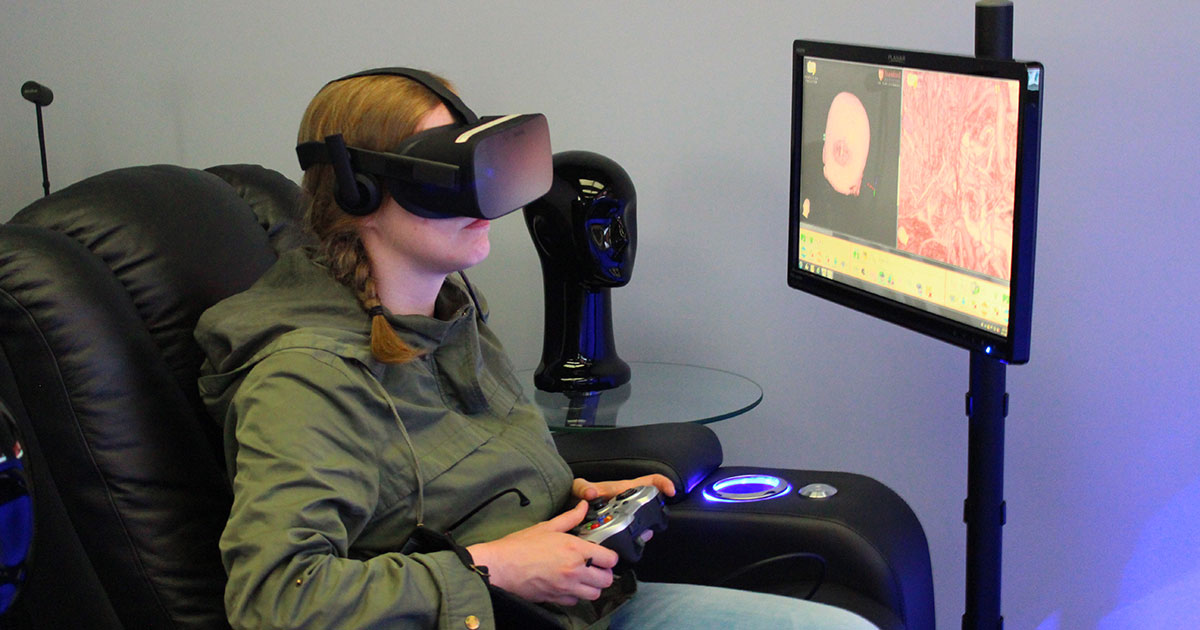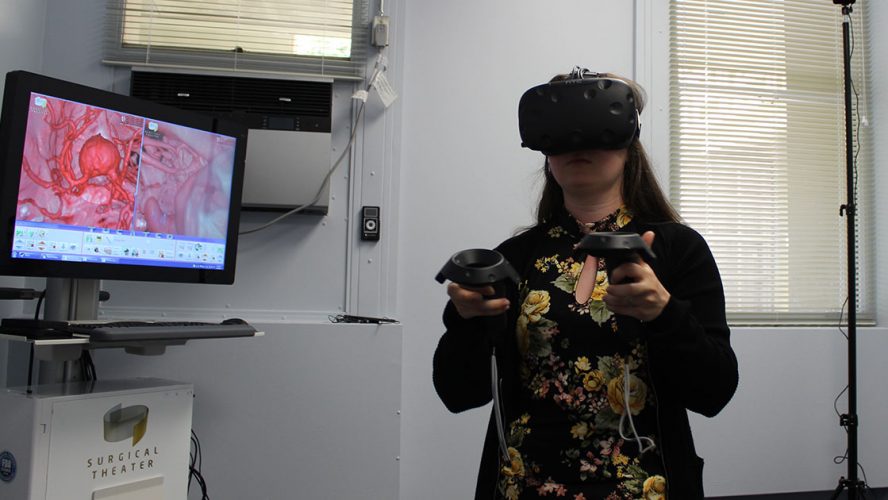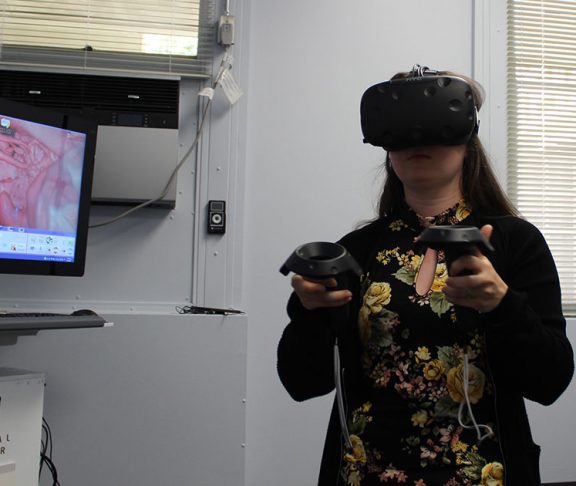In the heart of the hospital lies a dark, blue-lit room that serves as a command center for virtual exploration. In groups of four, the neurosurgeons of tomorrow traverse complex anatomy along the base of the skull, fly around the dome of an aneurysm, and glide past intricate tangles of vessels. Through the virtual reality (VR) headset, hundreds of challenging cases can be planned and reviewed before picking up a scalpel.
The future, now
Behind that dark-lit room is where I construct each brain — each person with a unique anatomy, pathology, and course of action. Whether for the clinic or the operating room, it takes practice and attention to build a virtual brain that is meaningful to the viewer. With every patient and surgeon that is reached with this technology, I hope this novel teaching tool will be brought into the light.
Investing in education is made easier with powerful, adaptable technology, and neurosurgical VR is just that — it builds upon the existing foundation of medical imaging to create invaluable virtual experiences for medical students and surgeons.

Since the advent of brain MRI in the late 1970’s, medical imaging has advanced along with how surgeons learn. We now have the ability to transform each patient’s MRI and CT scans into three-dimensional, 360-degree virtual environments of not only vessels, bone, and brain, but nerve fibers and functional data, altogether in one interactive landscape.
Made to order
Rather than a one-size-fits-all approach to surgical training, VR is a customizable experience that can meet the needs of each trainee that enters the virtual space. Freedom of movement and perspective allows each surgeon to craft their entrance through the bone and rehearse their own surgical approach, unlocking the boundaries of the traditional two-dimensional plane.
VR is not just for surgeons, either — it’s gone mobile, too. Patients can see inside their brain and spine when they visit the clinic, or while awaiting surgery. With such versatility, comprehensive medical VR programs have begun to emerge across the country. Often, the innovative push is focused on the operating room; it is rare for technology to make its way into the classroom, let alone the hands of the patient. Still, only a handful of institutions utilize this technology. Heavily startup-driven and with limited automation, imaging-derived medical VR is a serious commitment to education and training. However, if applied to the fullest extent, this resourceful technology can be worthwhile and make a significant impact on patient satisfaction and surgical outcomes.

